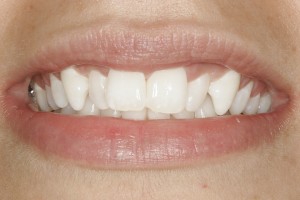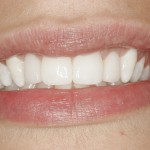The American Academy of Periodontology (AAP) estimates that approximately three out of four Americans suffer from some form of gum disease — from mild cases of gingivitis, to the more severe form known as periodontitis. However, despite this prevalence, approximately only three percent seek treatment for their gum disease. With increasingly more research indicating that gum disease may be linked to several other diseases, including diabetes, heart disease and certain forms of cancer, maintaining healthy teeth and gums has become more important that ever.
According to Samuel Low, DDS, MS, Associate Dean and professor of periodontology at the University of Florida College of Dentistry, and President of the American Academy of Periodontology, the discrepancy between the prevalence of gum disease and the lack of treatment can likely be blamed on a lack of understanding of the effect periodontal disease can have on overall health. “Patients do not always seek the periodontal care they require because they are not aware of the long-term and potentially dangerous implications of untreated gum disease,” says Dr. Low. “Unfortunately, there are a variety of myths surrounding periodontal disease and its repercussions.”
In order to help distinguish between fact and fallacy regarding periodontal disease, the AAP has identified and addressed below some common misconceptions about oral health.
1. Bleeding gums are not that big of a deal. Red, swollen and bleeding gums are an important sign of periodontal disease. If you notice bleeding while brushing or flossing, or when eating certain foods, you should schedule a visit with your dental professional to be evaluated for periodontal disease. Studies have shown that in addition to tooth loss, gum disease may contribute to the progression of other diseases, including heart disease and diabetes, so it is important that you begin treating periodontal disease as soon as possible.
2. You don’t need to floss every day. Routine oral care, which includes brushing after every meal and before bedtime, and flossing at least once a day, is the best way to prevent gum disease. However, a recent survey estimates that only 13.5 percent of Americans floss each day. It is vital that you keep up with your daily oral care, and see a dental professional for a thorough check-up twice a year. If gum disease is diagnosed, a consultation with a periodontist, a dentist who specializes in treating periodontal disease, may be beneficial.
3. A visit to the periodontist will be scary. Periodontists are gum disease experts. They have received three or more years of specialized training following dental school centered on the diagnosis, treatment and prevention of periodontal disease. Periodontists are equipped with the latest treatments and technologies, using innovative tools such as digital radiography, ultrasound technology, biomarker measurement and laser therapy to help make your visit more comfortable.
4. A tooth lost to gum disease is a tooth lost forever. Gum disease is a major cause of tooth loss in adults. However, in addition to treating gum disease, periodontists are also experts in placing dental implants — a convenient and comfortable way to permanently replace missing teeth. A dental implant is an artificial tooth root that is placed into the jaw to hold a replacement tooth. Studies have shown that dental implants have a 98 percent success rate, and with proper care, allow you to speak, eat and smile with confidence. In fact, a survey conducted by the American Academy of Periodontology found that over 70 percent of respondents reported being “pleased” or “extremely satisfied” with the results of their dental implants.
5. Poor oral hygiene is the only way to develop gum disease. Forgoing good oral hygiene can certainly contribute to the progression of gum disease, but there are a variety of other factors that can also impact your risk. For instance, tobacco use has been shown to greatly increase your chance of developing gum disease. Stress, poor diet, and even genetics, can also play a role in the health of your gums.
About the American Academy of Periodontology
The American Academy of Periodontology (AAP) is the professional organization for periodontists — specialists in the prevention, diagnosis, and treatment of diseases affecting the gums and supporting structures of the teeth, and in the placement of dental implants. Periodontists are also dentistry’s experts in the treatment of oral inflammation. They receive three additional years of specialized training following dental school, and periodontics is one of the nine dental specialties recognized by the American Dental Association. The AAP has 8,000 members world-wide.
Source: American Academy of Periodontology





